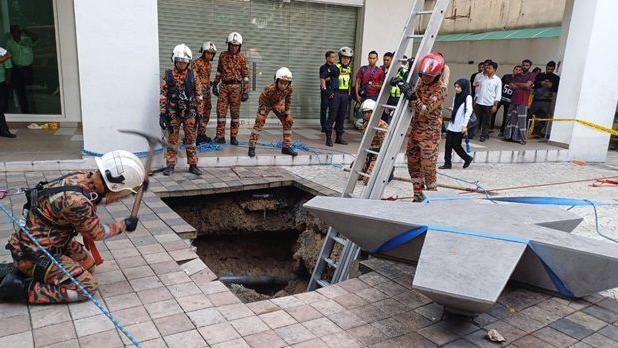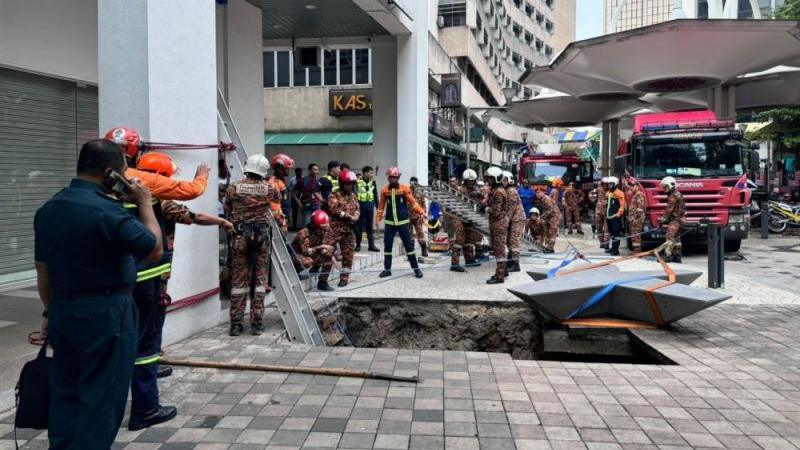Woman swallowed by pavement sinkhole in Kuala Lumpur

A search and rescue operation is underway to find the trapped woman.
- Published
Malaysian authorities are trying to rescue a woman who fell into an eight-metre deep sinkhole that opened on a busy road in Kuala Lumpur.
The 48-year-old Indian national was sitting on a roadside bench in Jalan India Masjid when the ground beneath her suddenly caved in, according to local police.
Videos on social media show crowds of people watching rescue workers trying to make their way into the sinkhole. Some have ladders, while others are using hammers and diggers to try and clear the way.
There does not appear to be any sign of the woman.
The Kuala Lumpur Fire and Rescue Department said it received a distress call at 08:22 local time (00:22 GMT) and dispatched 15 firemen to the scene.
Operation commander Mohd Riduan Akhbar told local media that a search and rescue operation was being conducted.
"The Special Tactical Operation and Rescue Team of Malaysia (STORM) and the K9 unit are at the location," he said.
Ninety personnel from various other agencies have also joined in the operation, according to local police chief Assistant Commissioner Sulizmie Affendy Sulaiman.
"We will look at CCTV footage and take statements from witnesses to get a clearer picture of what occurred," he said.
The BBC has reached out to the Kuala Lumpur Fire and Rescue Department for comment.

Sinkholes generally form when underground water dissolves the rock on the surface, causing a hole to form.
Although there is no precise data globally, geologists say they are reasonably common. Human injuries, however, are very rare.
One of the worst recent sinkholes disasters in terms of casualties occurred in Canada in 2010, when a family of four died after their entire house was swallowed by a gaping sinkhole near Montreal.
The world's largest sinkhole is Xiaoxhai Tiankeng in south-western China. With a depth measuring 660 metres, researchers believe it was formed more than 128,000 years ago.